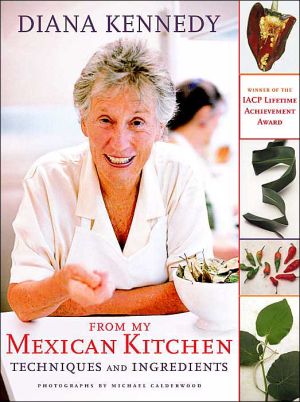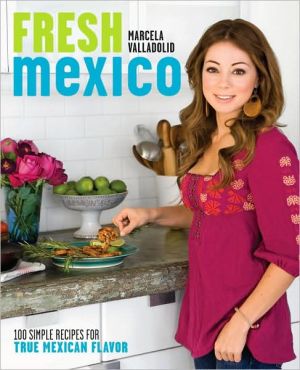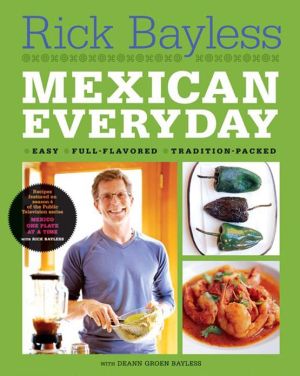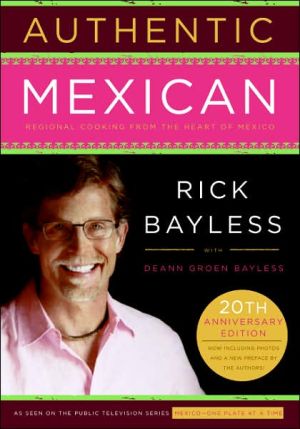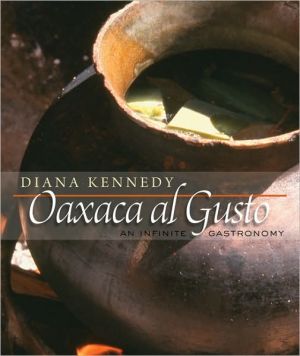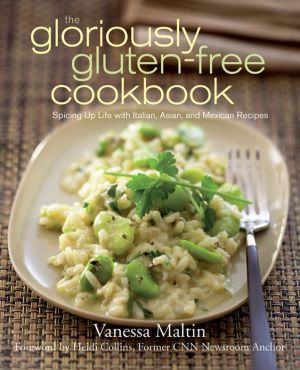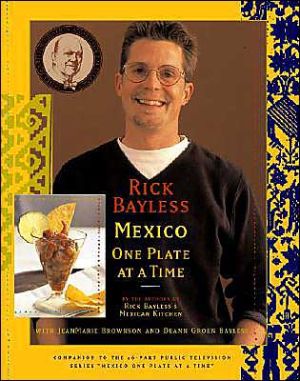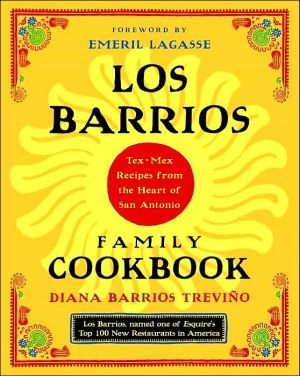From My Mexican Kitchen: Techniques and Ingredients
Diana Kennedy has been called the “ultimate authority, the high priestess” of Mexican cooking, and with good reason. For more than forty years she has traveled through her beloved adoptive country, researching and recording its truly extraordinary cuisine. Now Diana turns her attention to the book she readily admits “should have been written years ago.”\ Diana’s objective in From My Mexican Kitchen: Techniques and Ingredients is simple: to provide a guide to better understanding the...
Search in google:
Diana Kennedy has been called the “ultimate authority, the high priestess” of Mexican cooking, and with good reason. For more than forty years she has traveled through her beloved adoptive country, researching and recording its truly extraordinary cuisine. Now Diana turns her attention to the book she readily admits “should have been written years ago.”Diana’s objective in From My Mexican Kitchen: Techniques and Ingredients is simple: to provide a guide to better understanding the ingredients Mexico has to offer and how best to prepare them. Her execution is little short of brilliant. The book is invaluable to the novice eager for an introduction to Mexican cooking, but it is equally important for the aficionados interested in refining and expanding their knowledge and skills.From My Mexican Kitchen takes readers and cooks on a tour of the primary ingredients of the cuisine, from achiote and avocado leaves to hoja santa, huauzontle, and the sour tunas called xoconostles—which are increasingly available in the United States. Diana unravels the dizzying array of fresh and dried chiles, explaining their uses and preparation; vibrant color photographs at last take the guesswork out of identifying them!Step-by-step photographs and Diana’s trademark instructions (peppered with her over-the-shoulder asides) lead us through the proper techniques for making moles, tamales, tortillas, and much more. Some highlights: chiles rellenos, frijoles de olla, salsa de jitomate, fresh corn tamales from Michoacán, and bolillos (Mexican bread rolls). These recipes provide a solid grounding for the new Mexican cook, and Diana then sends readers to her earlier work for more advanced regional recipes.Brilliantly photographed, with a text at once lively and authoritative, Diana Kennedy’s From My Mexican Kitchen is the one book anyone interested in this food cannot afford to be without. Publishers Weekly Kennedy has often been termed the Julia Child of Mexican cuisine, and the comparison is almost inescapable in this competent, humorous and balanced guide to the techniques needed to create foods indigenous to Mexico. Kennedy, acclaimed author of three other standard-setting Mexican cookbooks, has been studying the country's food since 1957 and now lives there for much of the year. In the first part, the book focuses on ingredients, while the second part focuses on techniques, and both have recipes interspersed throughout. One of the fine qualities that Child and Kennedy share is a judicious outlook on fat: Kennedy instructs readers to "forget about cholesterol when you are next having breakfast in a Mexican market" and indulge in natas, a form of clotted cream. A comprehensive chapter on the many types of chiles could almost stand alone as a primer on the topic, and another on beans offers recipes for several types of refried beans, including Yucatecan Sieved Beans. In the introduction to a chapter on mole in the techniques section, Kennedy corrects the misperception that it's a kind of "chocolate sauce," and then she goes on to provide instructions for Mole Poblano and Mole Verde. The more complicated recipes are accompanied by useful step-by-step photographs, but it's Kennedy's no-nonsense tone that makes her both a trusted guide and a delight to read. This volume is encyclopedic in the sense that it is fantastically complete, but it is also utterly reader-friendly because it is so highly personal and helpfully detailed. (Sept.) Forecast: Kennedy is the doyenne of Mexican cooking, and deservedly so. This should become an instant classic. Copyright 2003 Reed Business Information.
GUACAMOLE\ Guacamole is one of those popular Mexican foods that is easy to make and very nutritious. There are many versions in Mexico itself, like a delicious one with tomatillos and avocado leaf, as well as many distortions that find their way back to Mexico (like the version in My Mexico from Zacatecas with of all things sour cream!). Guacamole is often served alone or as part of a botana with totopos, to accompany tacos, or as part of that extravaganza of a dish, Carne Asada a la Tampiqueña (The Art, page 287).\ There is a lot of advice about how to keep guacamole from turning brown if it is not eaten when freshly made: by adding lime juice (which is not always appropriate), leaving the pits immersed in the mashed flesh, keeping it in an airtight container, and the latest foolproof one of pressing plastic wrap over the surface. (I shudder to think of the action of the fat off the avocados on the plastic!) My advice is don't make it in advance. Have everything already chopped, crush the base ahead of time, and mash the avocados at the last minute in front of guests. Why not? But be sure you have a nice-size molcajete (see page 298) to do your show in style. Of course, the perfect guacamole has to be made in a molcajete so the flavors are intensified by the crushing of the ingredients—cutting them just isn't the same. But if you don't have one, you can blend the base of onion, chile, cilantro, and salt and then mash in the avocados to a rough texture; don't blend to a smooth consistency—texture means flavor!\ The recipe that follows is one that I first came across when I went to Mexico in 1957, and it seems to me to be a classic. One of the simpler northern versions with little wild chiles, onion, and lime juice is delicious, as well as the guacamole with the surprising combination of fruit, chiles, and avocado from Guanajuato (My Mexico, page 106). See the advice about buying avocados in advance on page 95, and no sweet onions, please!\ Makes about 2 1/2 cups (625ml)\ 2 heaped tablespoons finely chopped white onion\ 4 serrano chiles, finely chopped (yes, seeds and all), or to taste\ 3 heaped tablespoons roughly chopped cilantro Sea salt to taste\ 3 avocados (about 1 pound/450g)\ About 1/2 cup (125ml) finely chopped, unskinned tomatoes\ The toppings: \ 1/4 cup (63ml) finely chopped tomatoes\ 1 heaped tablespoon finely chopped white onion\ 2 heaped tablespoons finely (but not too finely, just prettily) chopped cilantro\ Put the onion, chiles, cilantro, and salt into a molcajete (see note above) and crush to a paste. Cut the avocados in half and, without peeling, remove the pit and squeeze out the flesh. Mash the avocado roughly into the base and mix well. Stir in the tomatoes and sprinkle the surface of the guacamole with the toppings. Serve immediately.\
\ Publishers WeeklyKennedy has often been termed the Julia Child of Mexican cuisine, and the comparison is almost inescapable in this competent, humorous and balanced guide to the techniques needed to create foods indigenous to Mexico. Kennedy, acclaimed author of three other standard-setting Mexican cookbooks, has been studying the country's food since 1957 and now lives there for much of the year. In the first part, the book focuses on ingredients, while the second part focuses on techniques, and both have recipes interspersed throughout. One of the fine qualities that Child and Kennedy share is a judicious outlook on fat: Kennedy instructs readers to "forget about cholesterol when you are next having breakfast in a Mexican market" and indulge in natas, a form of clotted cream. A comprehensive chapter on the many types of chiles could almost stand alone as a primer on the topic, and another on beans offers recipes for several types of refried beans, including Yucatecan Sieved Beans. In the introduction to a chapter on mole in the techniques section, Kennedy corrects the misperception that it's a kind of "chocolate sauce," and then she goes on to provide instructions for Mole Poblano and Mole Verde. The more complicated recipes are accompanied by useful step-by-step photographs, but it's Kennedy's no-nonsense tone that makes her both a trusted guide and a delight to read. This volume is encyclopedic in the sense that it is fantastically complete, but it is also utterly reader-friendly because it is so highly personal and helpfully detailed. (Sept.) Forecast: Kennedy is the doyenne of Mexican cooking, and deservedly so. This should become an instant classic. Copyright 2003 Reed Business Information.\ \ \ \ \ Library JournalKennedy, the preeminent authority on Mexican cooking (The Essential Cuisines of Mexico), says, "this book should have been written years ago," but she was too excited then about all the recipes that she was discovering throughout the country to put together a book on ingredients and techniques. And, of course, until relatively recently, many of the ingredients essential to authentic Mexican cooking were difficult or impossible to find beyond their native regions. Here, then, is the "distillation" of Kennedy's vast knowledge about ingredients from chiles and Mexican cheeses to herbs, vegetables, and fruits, followed by step-by-step minitutorials on making tamales and tortillas, moles and table sauces, antojitos (the savory tidbits that she translates as "little whims"), and more. Dozens of color photographs provide a visual guide to the ingredients, and many more illuminate the techniques. Preparation notes and classic recipes such as guacamole accompany the ingredients, and the technique sections include recipes for traditional favorites and other regional specialties. Essential. Copyright 2003 Reed Business Information.\ \
